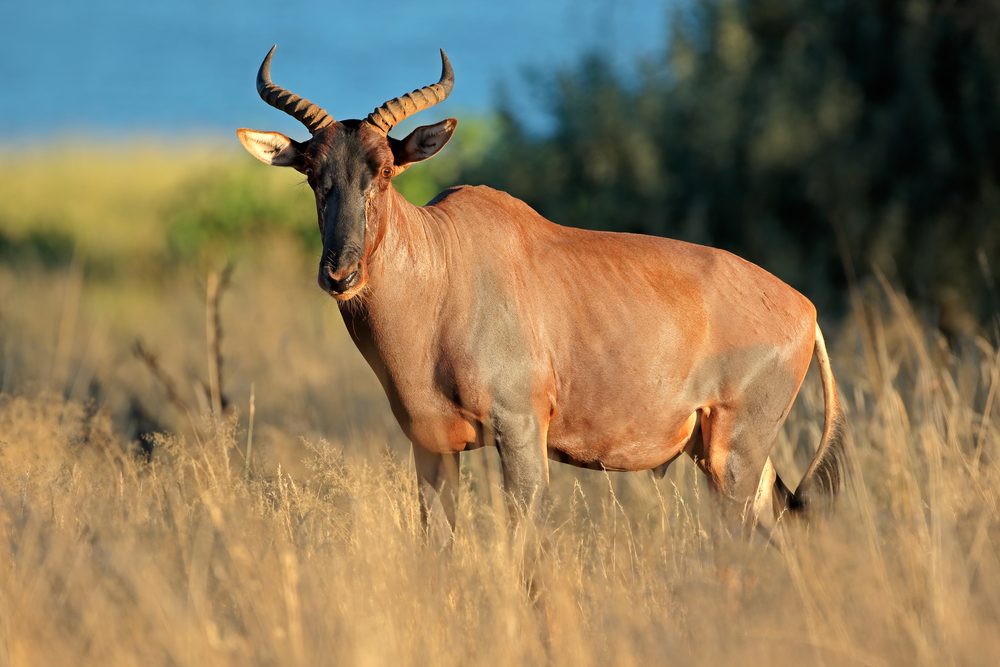Game hunting in Africa is a dream come true for many hunting enthusiasts worldwide. Whether it’s the Big 5, Dangerous 7, or Tiny 10 that you’re interested in pursuing, there is a challenge linked to each hunt. And more so with African plains game, who are used to being targeted and hunted, and use their keen senses, speed, agility, and intelligence to outwit predators and hunters alike.
In this blog, we will discover five of the most challenging antelopes to target when hunting in Africa and see how best to pursue them, taking into account their habitat, location, and unique hunting conditions.
[DYNAMIC-BLOGTABLEOFCONTENT]
Key Takeaways
- Africa is a continent of many game hunting species. From dangerous big game to minute antelopes and specialty game, there is something for everyone to enjoy while hunting in Africa.
- But there is something special about targeting African plains game, especially those that are seen as a real test to hunt and successfully target.
- Hunters can be tested in numerous ways when it comes to African hunts, including their physical fitness, shooting accuracy and shot placement, the weather conditions they may encounter, their knowledge of the African plains game antelope behavior as well as their patience and perseverance.
- But nothing is quite as exciting as pushing oneself to target some of the most elusive African plains game species there are: The Kudu, Sable, Vaal Rhebok, Nyala, and Tsessebe.
- Each species provides a different challenge to hunters to be able to target them.
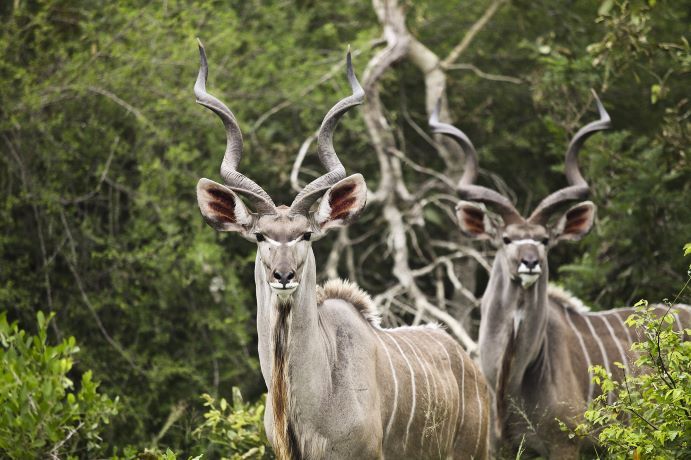
How Can a Difficult African Plains Game Hunt Challenge a Hunter?
A difficult African plains game hunting safari can test the hunter in numerous ways, testing not only their skills, physical endurance, or stamina but also their patience and perseverance to succeed at the task at hand, as well as their knowledge of their prey. Also under consideration are conservation initiatives, and ethical concerns, that remain of utmost importance as a hunter prepares for a game hunting safari.
- The diverse terrain can influence the hunter’s ability to easily spot and track game in the case of sense bushveld, or perhaps long-range shots may be the order of the day when getting closer to the antelope, through means of stalking, is just not an option. Rocky mountains may require exceptional fitness, for example when tracking and stalking the Vaal Rhebok that inhabits rocky mountains.
- Weather conditions may also challenge the hunter with humid or wet conditions adding to the difficulty of the African hunt.
- The physical demands of the hunts may well be overwhelming, with hunters that need to be prepared for a great deal of walking and demanding activity when plains game hunting in Africa.
- With some shooting having to be done from long distances, hunters are tested in terms of their accuracy and shot placement.
- African plains game are often extremely alert, have keen senses, and are quick to flee at the first sign of danger. They are often also experts at the art of camouflage, making them difficult to easily spot in their chosen habitats.
The Five Most Challenging Antelopes to Target on an African Hunt
While many hunters may think that an African plains game hunting safari may be an easy African hunt, the opposite is also quite true, with very many plains game antelopes that seriously challenge the hunter to bring his A-game to the fore.
Let’s take a look at five of the most challenging plains game antelopes to target when hunting in Africa:
The Sable
The sable (Hippotragus niger) is an antelope renowned for its intelligence and wariness. It is a large antelope, with a dark coat and impressive long, scimitar-shaped horns that are not just for show, but are used to protect themselves against predators, and hunters should see this as a warning, as an injured or wounded sable can be quite aggressive and will defend itself. Remember too, to check that the sable is quite dead before approaching it… those horns are sharp!
The sable’s habitat of savanna and mixed woodlands allows them plenty of places in which to hide in the dense bush, and this, combined with its elusive nature, makes it quite a challenging target for African plains game hunters.
When hunting in Africa, these magnificent antelope can be targeted in South Africa, Namibia, Mozambique, Zambia, Zimbabwe, and Botswana.
When on a sable hunting safari, there are a couple of popular hunting methods that are utilized:
- Spot and Stalk: Using knowledge of their habitat and areas that they often frequent to stalk them until close enough to get the shot.
- Ambush Hunting: Sable are water-dependent antelope and often frequent waterholes to drink. Setting up a temporary blind or ambush is a common technique used to target the antelope.
- Bow hunting: Bow hunting, and getting close enough to target the antelope, is yet another method.
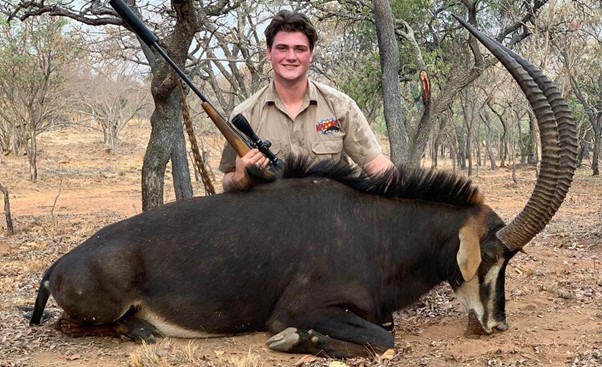
The Nyala
The common nyala (Tragelaphus angasii) is a striking medium-sized African plains game antelope, with the males of the species having unique markings and sporting exceptional spiral horns, reaching between 24-33 inches in length. This sought-after antelope species is native to southern Africa and is a challenge to hunt due to its shy, elusive nature, as well as its exceptional senses and alertness.
In terms of timing, the best time of day to hunt the nyala is early morning or late afternoon, when they are more likely to be active. The antelope’s shy nature sees them preferring a habitat with dense vegetation and bush where they can hide. The nyala is also quite good at camouflaging itself within the bushveld, making it even more challenging for the hunter.
The common nyala is targeted in Mozambique, South Africa, and Zimbabwe.
This African plains game adversary is hunted through spot and stalk methods, blind hunting where blinds are set up in an area where the antelope is known to feed and frequent, such as waterholes, or using expert trackers or guides to follow the antelope’s tracks through the vegetation.
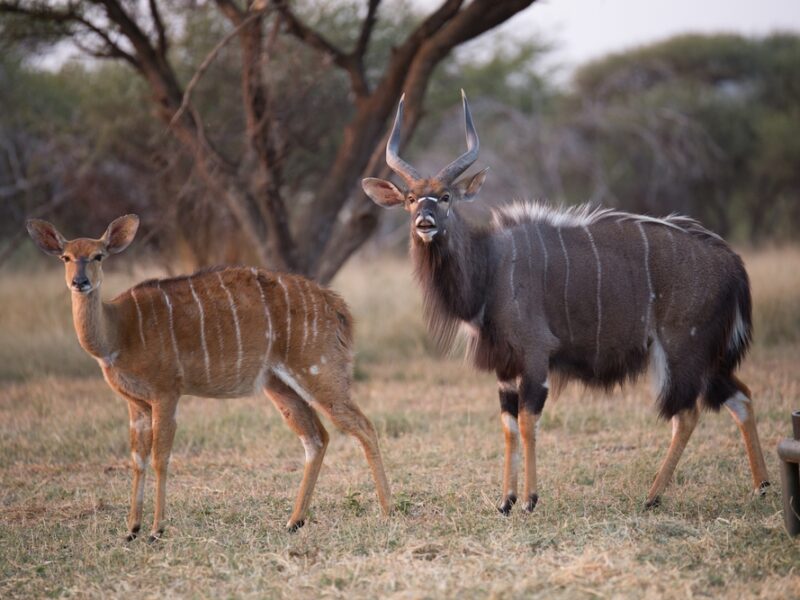
The Kudu
Referred to as Africa’s gray ghost as it is simply so elusive, along with its ability to hide within plain sight in the veld, the kudu is the king of the spiral-horned antelope and a magnificent game hunting trophy to add to any collection – if you can find it! Be prepared to have your patience tested, but perseverance will win in the end, and the wait is well worth it for this African plains game antelope.
They may be large antelopes but still err on the side of caution and prefer to remain hidden, relying on their senses for warnings of perceived threats and dangers. These antelope hide out in dense vegetation, making stalking them extremely difficult. Only males of the species have horns that can reach up to 6 feet. They also have an amazing ability to leap out of the brush when least expected, and easily clear 6 feet in height, with a single jump.
There are two species of kudu, namely the greater kudu (Tragelaphus strepsiceros) and the lesser kudu (Tragelaphus imberbis), both a challenge to hunt but found in different areas on the African continent. The greater kudu is more widely distributed and can be hunted in multiple Southern African nations, while the lesser kudu is primarily found in East Africa.
Popular hunting destinations for the greater kudu antelope include Namibia, South Africa, Zimbabwe, Mozambique, and Zambia, while the primary hunting region for the lesser kudu is Tanzania, along with Uganda and some regions of Ethiopia, where hunting is allowed.
Common hunting techniques used when kudu hunting in Africa include the spot and stalk method, ambushing the herd at the waterhole, or setting up a blind near waterholes and feeding areas that they are known to frequent.
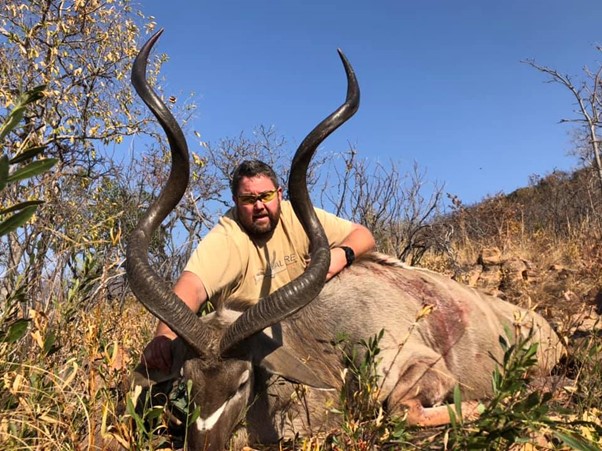
The Vaal Rhebok
The Vaal Rhebok (Pelea capreolus), also known as the Grey Rhebok, is an antelope found in South Africa’s mountainous regions. They are a medium-sized antelope, with a stocky build, short horns, and a gray-brown coat.
Vaal Rhebok hunting in Africa is made more difficult due to the antelope’s keen senses of eyesight and hearing, making stalking them without being seen or heard quite tricky.
They are renowned for their agility and ability to climb and navigate through and in rocky and mountainous terrain. The challenge in targeting these agile antelope is that they are quickly able to move up steep slopes and areas, where hunters have trouble keeping pace or keeping them in sight, or even having the time to get a shot ready before they disappear.
When it comes to the main hunting locations for the Vaal Rhebok, South Africa’s Drakensberg Mountains is a prime hunting spot.
Game hunting methods for hunting the Vaal Rhebok include:
- Tracking fresh tracks from the antelope across treacherous and rocky terrain until the hunter is within shooting distance.
- Spot and stalk where the hunter spots and slowly stalks the antelope.
- High-ground observation where the hunter uses an elevated position to spot the rhebok’s position. This is a popular method as it allows the hunter to more easily see the antelope and the surrounding terrain.
The Vaal Rhebok’s elusive and secretive nature, along with their ability to quickly disappear, or blend in and camouflage themselves in their habitat, makes them a challenge for hunters to locate. This, together with the fact that hunters may be making long shots that require expert shot placement, makes them one of the most challenging antelope to target when hunting in Africa.

The Tsessebe
This African plains game antelope is an unusual looking one, to say the least. The tsessebe (Damaliscus lunatus) is a large antelope known for its speed and agility and thrives in habitats of open grasslands and wooded savannas.
There are two primary subspecies of Tsessebe recognized, namely the Common Tsessebe (Damaliscus lunatus lunatus) and the Bangweulu Tsessebe (Damaliscus lunatus superstes). The common tsessebe is mostly found in southern Africa, while the Bangweula tsessebe inhabits Zambia’s Bangweulu swamp region.
This antelope’s keen senses make it difficult to approach them, ensuring that the hunter needs to be exceptionally cautious during the stalk, to avoid being detected.
Hunting locations for this large antelope include Namibia, Zambia, South Africa, and Zimbabwe, amongst others.
Popular hunting methods on this African hunt include the spot and stalk, safari style, as well as ambush hunting to target the tsessebe on a game hunting safari.
One positive when it comes to tsessebe hunting in Africa, is that when they are running from danger, they will often stop and look back, giving the hunter a brief period to take a shot. Expect this and be ready to target this challenging hunting adversary.
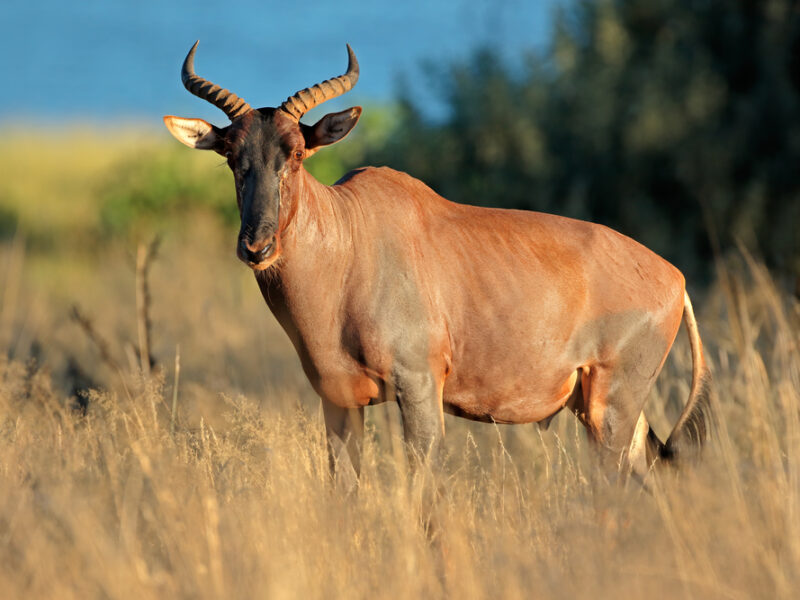
Frequently Asked Questions
What is African plains game?
African plains game refers to the antelopes and other species that inhabit the savannas and plains of Africa.
Which is the most elusive antelope to hunt?
Africa’s most elusive antelope is the kudu, also known as Africa’s “gray ghost.” This spiral-horned antelope is extremely shy and has perfected the art of camouflage in the bush. Often, a hunter walks right close to it without even realizing it is there.
Which species of antelope is the largest in Africa?
Africa’s largest antelope is the eland, with a weight of up to 2,000 pounds. This African plains game antelope is also known as being quite skittish and shy.
What is the best African antelope to eat?
It has been said that the eland’s meat rivals that of beef in terms of taste and texture, allowing those that are new to game meat (also called venison) to enjoy the taste.
What is the fastest African antelope?
The fastest antelope in Africa is the common Tsessebe, which can reach speeds of over 50 miles per hour, allowing them to outrun perceived threats and danger, as well as predators.
Is it true that the kudu can jump 6 feet in the air?
Yes, the kudu is renowned for its exceptional jumping skills. From a standing position, the antelope can easily clear 6 feet, allowing it to flee from danger with ease. This is often a challenge when hunters feel they have corned the antelope, only for it to effortlessly jump over a barricade and disappear.
Conclusion
Plains game hunting in Africa is a thrilling and exciting activity enjoyed by thousands of hunters each year. The thrill of a successful hunt, after targeting your chosen African plains game, is something to behold.
Whether it be Africa’s elusive gray ghost hunted in Namibia, or the alert and agile Vaal Rhebok in South Africa’s mountainous Drakensberg region, or perhaps even the speedy tsessebe in Zambia, the unforgettable memories of game hunting in Africa will stay for a lifetime.
And soon, you will be planning your next African hunt, along with which elusive antelope to target on the next trip. As Rudyard Kipling so famously said, “One cannot resist the lure of Africa.”
Author: B. Hershensohnn
